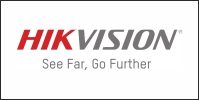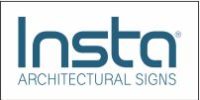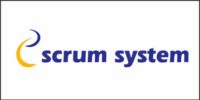 In the quest for enhancing process safety management (PSM), organizations must adopt a proactive approach to mitigate risks and foster a culture of continuous improvement. Here are three key steps to help improve PSM and ensure a safer working environment:
In the quest for enhancing process safety management (PSM), organizations must adopt a proactive approach to mitigate risks and foster a culture of continuous improvement. Here are three key steps to help improve PSM and ensure a safer working environment:
- Incorporating the CDC’s Prevention Through Design (PtD)
Overview: The Centers for Disease Control and Prevention (CDC) advocates for Prevention through Design (PtD), which emphasizes integrating safety considerations into the design phase of systems, processes, and facilities. This approach aims to eliminate or minimize occupational hazards at their source.
Implementation:
- Early Integration: Begin by incorporating PtD principles during the initial design of PSM facilities. Engage stakeholders, engineers, and safety professionals to identify potential hazards and design flaws before the facility becomes operational.
- Design Reviews: Conduct comprehensive PtD design reviews to address potential safety issues. This proactive approach helps anticipate and mitigate risks, adapting to evolving regulations and technologies.
- Continuous Updates: Although PtD primarily targets initial design, periodic reviews and updates should reflect new safety standards and technological advancements. This helps maintain a high level of safety throughout the facility’s lifecycle.
Benefits:
Reduces the likelihood of hazardous conditions by addressing safety concerns from the outset.
Enhances the facility’s overall safety profile, leading to fewer incidents and regulatory citations.
- Leveraging a Process Hazard Analysis (PHA)
Overview: A Process Hazard Analysis (PHA) is a systematic approach to identifying and evaluating hazards associated with highly hazardous chemicals in process systems.
It plays a critical role in ongoing safety management by continuously identifying and mitigating risks.
Implementation:

- Regular PHAs: Schedule and perform PHAs periodically to review the safety of processes, incorporating lessons learned and addressing any newly identified risks. This ensures that the safety management system remains effective and up-to-date.
- Focus on Safeguards: Evaluate the adequacy of existing safeguards and identify areas where additional safety measures are needed. Ensure that all potential hazards are accounted for and that safeguards are designed to handle worst-case scenarios.
- Actionable Outcomes: Use PHA findings to drive continuous improvements. Implement corrective actions and update safety procedures based on PHA recommendations to address identified vulnerabilities.
Benefits:
Enhances safety by proactively identifying and addressing potential hazards.
Helps maintain compliance with regulatory requirements and reduces the risk of incidents.
- Creating a Process Safety Management Game Plan
Overview: A structured game plan for PSM ensures that safety practices are effectively managed, communicated, and updated. This involves planning, executing, and reviewing safety measures to maintain high safety standards.
Implementation:
- Collaborative Reviews: Facilitate regular meetings with engineers, safety professionals, and management to review and discuss PSM components. This collaborative approach ensures that all stakeholders are aligned on safety objectives and improvements.
- Accessible Information: Ensure that all relevant process safety information is readily available and accessible to employees, especially those involved in day-to-day operations. Proper documentation and real-time tracking of operational status are crucial.
- Compliance and Monitoring: Develop procedures for monitoring compliance with safety regulations and for addressing any identified faults or risks promptly. Establish clear protocols for emergency shutdowns and control operations based on real-time observations and regulatory requirements.
Benefits:
Promotes a culture of safety through regular engagement and communication among stakeholders.
Ensures that safety measures are updated and effective in mitigating risks.
Challenges to Continuous Improvement
Despite best efforts, continuous improvement in PSM faces several challenges:
- Resource Constraints: Limited resources can hinder the ability to implement and maintain robust safety management systems.
- Inadequate Oversight: Lack of sufficient safety oversight and expertise can lead to ineffective PSM practices.
- Audit and Incident Review: Inconsistent audit results and inadequate post-incident reviews can impede progress toward safety improvements.
Implementing these three steps—incorporating PtD, leveraging PHAs, and creating a structured PSM game plan—can significantly enhance process safety management. By addressing common challenges and fostering a proactive safety culture, organizations can reduce risks, comply with regulations, and ensure a safer working environment.























































